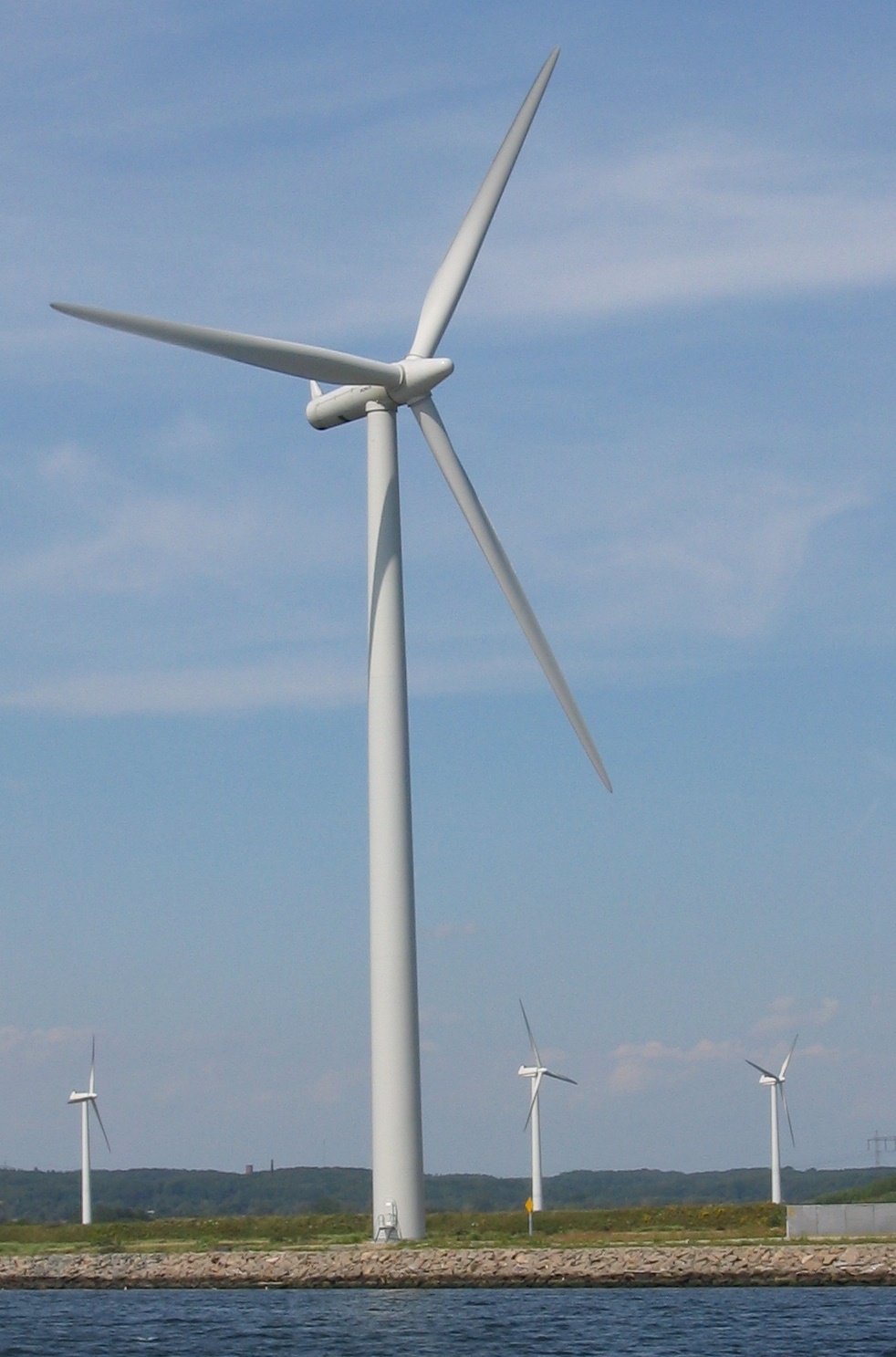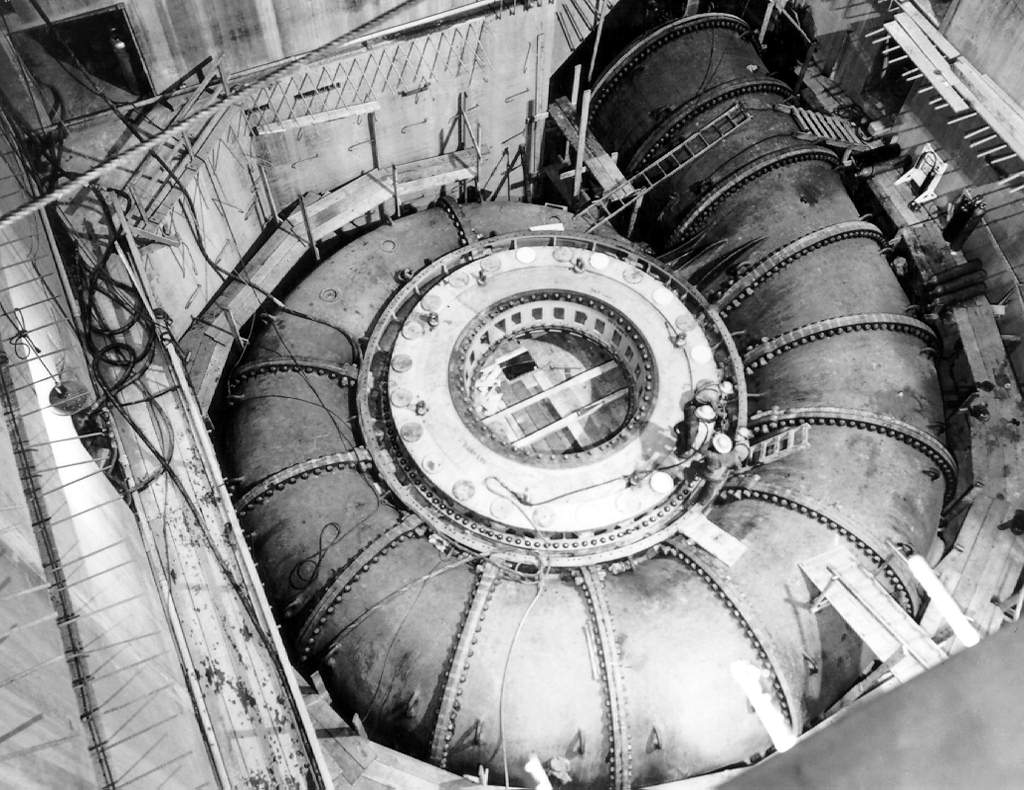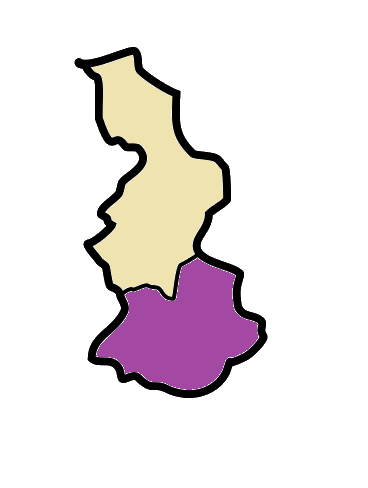|
Jorethang Loop Hydroelectric Project
Jorethang Loop Hydroelectric project is a , run-of-the-river hydroelectric power station on the Rangit river in South Sikkim district of Sikkim state in India. The dam is located near village Piple and power station is located about 13 km downstream near village Majhitar. Dans Energy Private Limited was awarded contract for construction of the project. The project was officially inaugurated on 29 October 2015. The project was built at a cost of Rs 1,182 crores. Powerhouse The dam is located about 5 km upstream from Jorethang and powerhouse is located about 13 km downstream from dam site at . Water is diverted from barrage through 6.8 km long head race tunnel, through a surge shaft of 25 m dia. and pressure shaft to power house near village Majitar. The powerhouse has 2 x 48.75 MW vertical shaft type Francis turbine The Francis turbine is a type of water turbine. It is an inward-flow reaction turbine that combines radial and axial flow concepts. ... [...More Info...] [...Related Items...] OR: [Wikipedia] [Google] [Baidu] |
Sikkim
Sikkim (; ) is a state in Northeastern India. It borders the Tibet Autonomous Region of China in the north and northeast, Bhutan in the east, Province No. 1 of Nepal in the west and West Bengal in the south. Sikkim is also close to the Siliguri Corridor, which borders Bangladesh. Sikkim is the least populous and second smallest among the Indian states. Situated in the Eastern Himalaya, Sikkim is notable for its biodiversity, including alpine and subtropical climates, as well as being a host to Kangchenjunga, the highest peak in India and third highest on Earth. Sikkim's capital and largest city is Gangtok. Almost 35% of the state is covered by Khangchendzonga National Park – a UNESCO World Heritage Site. The Kingdom of Sikkim was founded by the Namgyal dynasty in the 17th century. It was ruled by Buddhist priest-kings known as the Chogyal. It became a princely state of British India in 1890. Following Indian independence, Sikkim continued its protectorate stat ... [...More Info...] [...Related Items...] OR: [Wikipedia] [Google] [Baidu] |
Clean Development Mechanism
The Clean Development Mechanism (CDM) is a United Nations-run carbon offset scheme allowing countries to fund greenhouse gas emissions-reducing projects in other countries and claim the saved emissions as part of their own efforts to meet international emissions targets. It is one of the three Flexible Mechanisms defined in the Kyoto Protocol. The CDM, defined in Article 12 of the Protocol, was intended to meet two objectives: (1) to assist non-Annex I countries (predominantly developing nations) achieve sustainable development and reduce their carbon footprints; and (2) to assist Annex I countries (predominantly industrialized nations) in achieving compliance with their emissions reduction commitments (greenhouse gas emission caps). The CDM addressed the second objective by allowing the Annex I countries to meet part of their emission reduction commitments under the Kyoto Protocol by buying Certified Emission Reduction units from CDM emission reduction projects in developin ... [...More Info...] [...Related Items...] OR: [Wikipedia] [Google] [Baidu] |
Dams In Sikkim
A dam is a barrier that stops or restricts the flow of surface water or underground streams. Reservoirs created by dams not only suppress floods but also provide water for activities such as irrigation, human consumption, industrial use, aquaculture, and navigability. Hydropower is often used in conjunction with dams to generate electricity. A dam can also be used to collect or store water which can be evenly distributed between locations. Dams generally serve the primary purpose of retaining water, while other structures such as floodgates or levees (also known as dikes) are used to manage or prevent water flow into specific land regions. The earliest known dam is the Jawa Dam in Jordan, dating to 3,000 BC. The word ''dam'' can be traced back to Middle English, and before that, from Middle Dutch, as seen in the names of many old cities, such as Amsterdam and Rotterdam. History Ancient dams Early dam building took place in Mesopotamia and the Middle East. Da ... [...More Info...] [...Related Items...] OR: [Wikipedia] [Google] [Baidu] |
Rangit Dam
Rangit Dam (Hindi: रन्गीत् बाँध Bāndh), which forms the headworks of the Rangit Hydroelectric Power Project Stage III, is a run-of-the-river power project on the Ranjit River, a major tributary of the Teesta River in the South Sikkim district of the Northeastern Indian state of Sikkim. The project's construction was completed in 1999. The project is fully functional since 2000. The project was built at a cost of Rs 4922.6 million (Rs 492.26 crores) (at US$1 = Rs 45, this is US$109.39 million). The average annual power generation from the 60 MW (3x20 MW) project is 340 GWh with firm power of 39 MW. Topography The Ranjit River on which the Rangit Dam is located, is a major right bank tributary of the Teesta River in Sikkim. The river arises from the Talung glacier and it meets the Teesta river at Melli after a travel of from its source. At the dam site, the catchment area drained is (rain-fed catchment is and the balance area is snow fed above snow lin ... [...More Info...] [...Related Items...] OR: [Wikipedia] [Google] [Baidu] |
Ministry Of Environment, Forest And Climate Change
The Ministry of Environment, Forest and Climate Change (MoEFCC) is an Indian government ministry. This ministry is headed by Secretary Rank senior most IAS officer. The ministry portfolio is currently held by Bhupender Yadav, Union Minister of Environment, Forest and Climate Change. The ministry is responsible for planning, promoting, coordinating, and overseeing the implementation of environmental and forestry programmes in the country. The main activities undertaken by the ministry include conservation and survey of the flora of India and fauna of India, forests and other wilderness areas; prevention and control of pollution; Indian Himalayan Environment and its sustainable development;afforestation, and land degradation mitigation. It is responsible for the administration of the 1947 national parks of India. The Ministry of Environment, Forest and Climate Change is the cadre controlling authority of the Indian Forest Service (IFS), one of the three All India Services. Hist ... [...More Info...] [...Related Items...] OR: [Wikipedia] [Google] [Baidu] |
Carbon Offset
A carbon offset is a reduction or removal of emissions of carbon dioxide or other greenhouse gases made in order to compensate for emissions made elsewhere. Offsets are measured in tonnes of carbon dioxide-equivalent (CO2e). One ton of carbon offset represents the reduction or removal of one ton of carbon dioxide or its equivalent in other greenhouse gases. One of the hidden dangers of climate change policy is unequal prices of carbon in the economy, which can cause economic collateral damage if production flows to regions or industries that have a lower price of carbon—unless carbon can be purchased from that area, which offsets effectively permit, equalizing the price. Within the voluntary market, demand for carbon offset credits is generated by individuals, companies, organizations, and sub-national governments who purchase carbon offsets to mitigate their greenhouse gas emissions to meet carbon neutral, net-zero or other established emission reduction goals. The volun ... [...More Info...] [...Related Items...] OR: [Wikipedia] [Google] [Baidu] |
Francis Turbine
The Francis turbine is a type of water turbine. It is an inward-flow reaction turbine that combines Radial turbine, radial and Axial flow turbine, axial flow concepts. Francis turbines are the most common water turbine in use today, and can achieve over 95% efficiency. The process of arriving at the modern Francis runner design took from 1848 to approximately 1920. It became known as the Francis turbine around 1920, being named after British-American engineer James B. Francis who in 1848 created a new turbine design. Francis turbines are primarily used for producing electricity. The power output of the electric generators generally ranges from just a few kilowatts up to 1000 MW, though mini-hydro installations may be lower. The best performance is seen when the Hydraulic head, head height is between . Penstock diameters are between . The speeds of different turbine units range from 70 to 1000 rpm. A Wicket gate (hydraulics), wicket gate around the outside of the Water tur ... [...More Info...] [...Related Items...] OR: [Wikipedia] [Google] [Baidu] |
Jorethang
Jorethang is a major town in Namchi district in the Indian state of Sikkim. Jorethang lies on the bank of Rangeet River, which is a tributary of the Teesta River, on the way to Pelling from Darjeeling, Siliguri and Kalimpong. Demographics As of the 2011 Census of India, Jorethang had a population of 9,009. Males constitute 52% of the population and females 48%. Jorethang has an average literacy rate of 88.85%, higher than the state average of 81.42%: male literacy is 93.36%, and female literacy is 84.20%. In Jorethang, 10.63% of the population is under 6 years of age. Education Schools in Jorethang offer primary, secondary and senior secondary education. There are various school like New Buds Academy, St. Francis' School, Little Angles Academy, Govt. Sen. Sec. School. Maghe Sankranti Mela This festival is held on the first of Magh in the Bikram Samwat Nepali calendar (about 14 January), marking the sun's entrance into Makara rashi ( Capricorn). It is one of th ... [...More Info...] [...Related Items...] OR: [Wikipedia] [Google] [Baidu] |
United News Of India
United News of India (UNI) is a multilingual news agency in India. It was founded On 19 December 1959 as an English news agency. Its commercial operations were started from 21 March 1961. With its ''Univarta'', a Hindi news service, UNI became one of the multilingual news service in the world. In 1992, it started its Urdu news service and hence became the first news agency to provide Urdu news. Currently, it is the second largest news agency in India, supplying news in English, Hindi, Urdu and Kannada languages. Its news bureaus are present in all state capitals and major cities of India. Background Press Council of India (PCI) in its first Press Commission report (1952–1954) emphasized on the importance of second news agency so that they can act as corrective to each other. But even after the support of PCI, United Press of India collapsed in 1958, due to financial problems. So some leading newspapers felt the need of a second news agency along with Press Trust of India. This ... [...More Info...] [...Related Items...] OR: [Wikipedia] [Google] [Baidu] |
South Sikkim District
Namchi District is a district of the Indian state of Sikkim. Its headquarters is at Namchi. Geography South Sikkim lies at an altitude of 400 to 2000 metres and has a temperate climate for most of the year. Major urban centres include Namchi, Ravangla, Jorethang and Melli. Assembly Constituencies The district was previously divided into eight assembly constituencies. * Barfung (BL) * Poklok-Kamrang * Namchi-Singhithang *Melli * Namthang-Rateypani * Temi-Namphing * Rangang-Yangang *Tumen-Lingi (BL) National protected area *Maenam Wildlife Sanctuary Economy South Sikkim is the most industrialised district in the state, owing to the availability of flat land. Since the geology is stable the roads are in good condition as compared to other parts of the state which suffer from landslides. The district is also known for Sikkim tea, which is grown near Namchi. Demographics According to the 2011 census South Sikkim district has a population of 146,850, roughly equal ... [...More Info...] [...Related Items...] OR: [Wikipedia] [Google] [Baidu] |
India
India, officially the Republic of India ( Hindi: ), is a country in South Asia. It is the seventh-largest country by area, the second-most populous country, and the most populous democracy in the world. Bounded by the Indian Ocean on the south, the Arabian Sea on the southwest, and the Bay of Bengal on the southeast, it shares land borders with Pakistan to the west; China, Nepal, and Bhutan to the north; and Bangladesh and Myanmar to the east. In the Indian Ocean, India is in the vicinity of Sri Lanka and the Maldives; its Andaman and Nicobar Islands share a maritime border with Thailand, Myanmar, and Indonesia. Modern humans arrived on the Indian subcontinent from Africa no later than 55,000 years ago., "Y-Chromosome and Mt-DNA data support the colonization of South Asia by modern humans originating in Africa. ... Coalescence dates for most non-European populations average to between 73–55 ka.", "Modern human beings—''Homo sapiens''—originated in Africa. Th ... [...More Info...] [...Related Items...] OR: [Wikipedia] [Google] [Baidu] |
Power Station
A power station, also referred to as a power plant and sometimes generating station or generating plant, is an industrial facility for the generation of electric power. Power stations are generally connected to an electrical grid. Many power stations contain one or more generators, a rotating machine that converts mechanical power into three-phase electric power. The relative motion between a magnetic field and a conductor creates an electric current. The energy source harnessed to turn the generator varies widely. Most power stations in the world burn fossil fuels such as coal, oil, and natural gas to generate electricity. Low-carbon power sources include nuclear power, and an increasing use of renewables such as solar, wind, geothermal, and hydroelectric. History In early 1871 Belgian inventor Zénobe Gramme invented a generator powerful enough to produce power on a commercial scale for industry. In 1878, a hydroelectric power station was designed and built ... [...More Info...] [...Related Items...] OR: [Wikipedia] [Google] [Baidu] |


.jpg)


